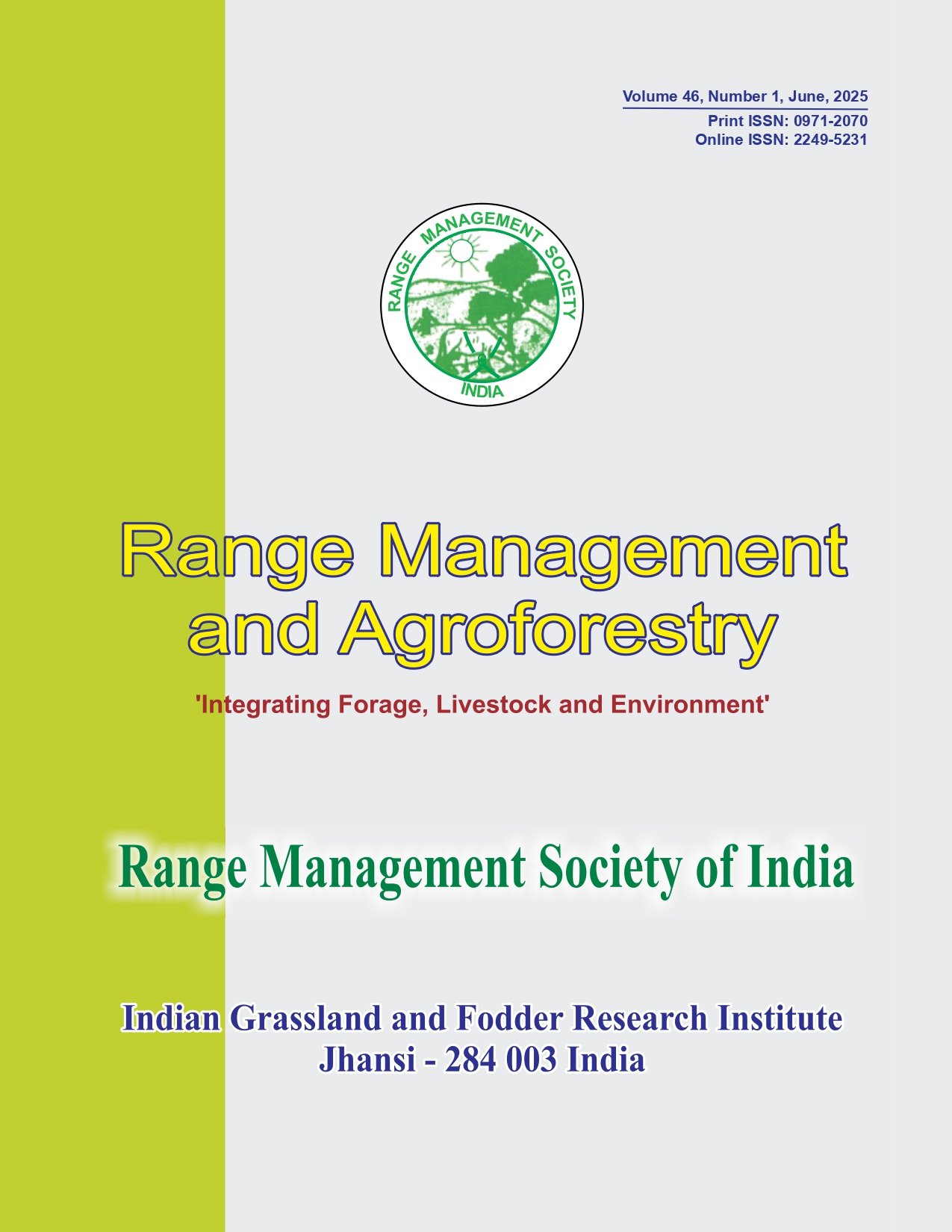Genetic diversity and structure analysis of white maize populations
DOI:
https://doi.org/10.59515/rma.2025.v46.i1.09Keywords:
Genetic diversity, Molecular markers, Structure analysis, White maize, YieldAbstract
Globally though yellow maize is more popular, white maize has its own niche in specific parts around the world including Central America, southern United States, northern part of South America, Mexico, Africa and some parts of Asia. However, efforts on white maize improvement are very scarce, particularly in India. The aim of the study was to characterize white maize populations for yield traits and to establish heterotic patterns using molecular markers. Twenty seven white maize populations comprising of 16 from CIMMYT, Mexico, 6 from Srinagar and 5 from NBPGR were characterized for yield traits, viz., NRPE (number of rows per ear), NKPR (number of kernel per row) and HSWT (hundred seed weight), and also characterized using SSR markers. Six populations were identified for higher NRPE; four populations for higher NKPR and five populations with high HSWT. Structure analysis identified three major populations, viz., P1, P2 and P3 consisting five, eleven and ten pure sub-populations, respectively. Principal Coordinate Analysis (PCoA) revealed that all the populations were distributed across the four quadrangles of the scatter plot. Efforts on heterotic grouping identified six populations for NRPE in HG-I (Heterotic Group-I), and three populations in HG-II (Heterotic Group-II). Further, all Indian populations were grouped in cluster A whereas CIMMYT populations are distributed in two different clusters (B and C). The populations were identified for different yield traits belonging to different heterotic groups. The inbred lines derived from these identified populations will have higher yield and will produce superior hybrids upon crossing inbreds from opposite heterotic groups.
Downloads
Downloads
Published
How to Cite
Issue
Section
License
Copyright (c) 2025 Abhijit Kumar Das, Shubhank Dixit, Deepak Bhamare, Ramesh Kumar, Yathish K. R., Shyambir Singh, Bhupender Kumar, Suby SB, Zahoor Ahmed Dar, Arushi Arora, Santosh Kumar, Sujay Rakshit

This work is licensed under a Creative Commons Attribution-ShareAlike 4.0 International License.







